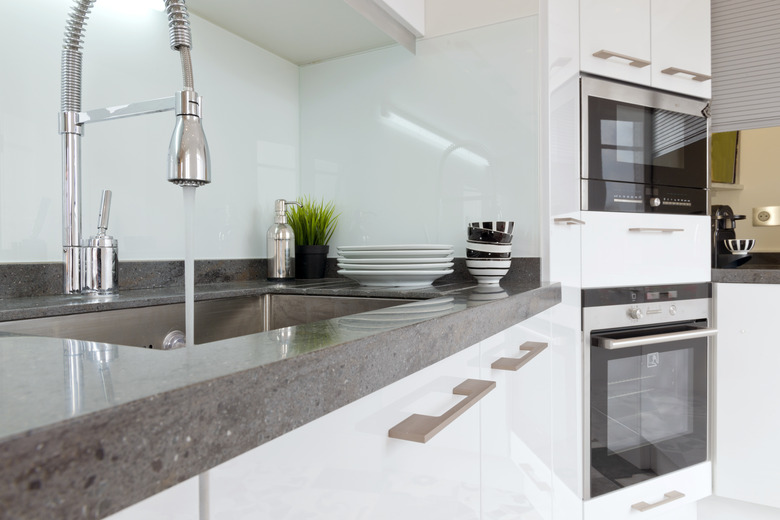How To Resurface Granite Countertops
You couldn't ask for a more durable or attractive countertop material than granite, but even though it looks impregnable, it's quite porous. Even if it has been sealed, it will, over time, absorb minerals from water and residual detergents and cleaning agents as well as oils from the stove and cutting boards. Some companies, such as Ideal Refinishing, will come to your house and sand your granite countertops to restore the original sheen, but there's an easier resurfacing method that requires less effort and that you can do yourself.
Purchase Resurfacing and Resealing Kit
Many companies that do granite restoration use a series of chemicals to get basically the same results as sanding. The good news for homeowners is that it's a foolproof method. None of the chemicals can harm the granite, they can only make it look better — each in its own way.
A typical restoration kit, such as the one from Marble & Granite Care Products or Stone Pro contains an abrasive scrubbing compound, a water-free crystallizer and a granite sealer, which is usually solvent-based. Some kits also include microfiber cloths and an abrasive sponge for scrubbing. The kit doesn't include polishing equipment, such as lambswool pads and an electric polisher.
Preparing for Resurfacing and Sealing
Before you open your granite resurfacing kit, check the countertop carefully for oil stains, which show up as dark spots on the granite. To remove these, Granite Gold recommends mixing equal parts acetone and baking soda to make a thick paste. Spread this on each of the spots, let it sit for 24 hours, then brush it away and rinse the countertop with water.
It's possible the granite has a few nicks or chips. If they are large enough to be distracting, you may want to fill them with clear epoxy. After mixing the two parts of the epoxy, apply it carefully to the countertop let it set, then sand it flat with the finest grit paper that will do the job (preferably 400-grit or finer).
Using a Granite Resurfacing Kit
Granite resurfacing doesn't take long, but time is valuable. To get the most out of yours, use all three chemicals in the kit. Start with the scrubbing compound, followed by the crystallizer and finish with the sealer. You can use each chemical by itself, and it will make a difference, but using all three together optimizes the results. My Stone Care demonstrates the process on YouTube.
- Apply a generous amount of scrubbing compound and work it into the stone with an abrasive pad, such as a kitchen scrubber or a fine steel wool pad. After you're done, let it sit on the granite for about five minutes to completely dissolve mineral deposits, then wipe it off with a microfiber cloth.
- Spray the crystallizer on the granite and work it around with a microfiber cloth.
- Apply the sealer by pouring a generous amount on the countertop and spreading with a scrubbing pad, not a cloth. The entire countertop should have a wet coat of material to ensure the product is able to sink into the pores of the stone. Let it dwell for five minutes, but don't let it dry out, then wipe the countertop clean with a microfiber rag.
Not all products are formulated the same and designed to be used in the same way, so be sure to carefully read the directions that come with your kit.
